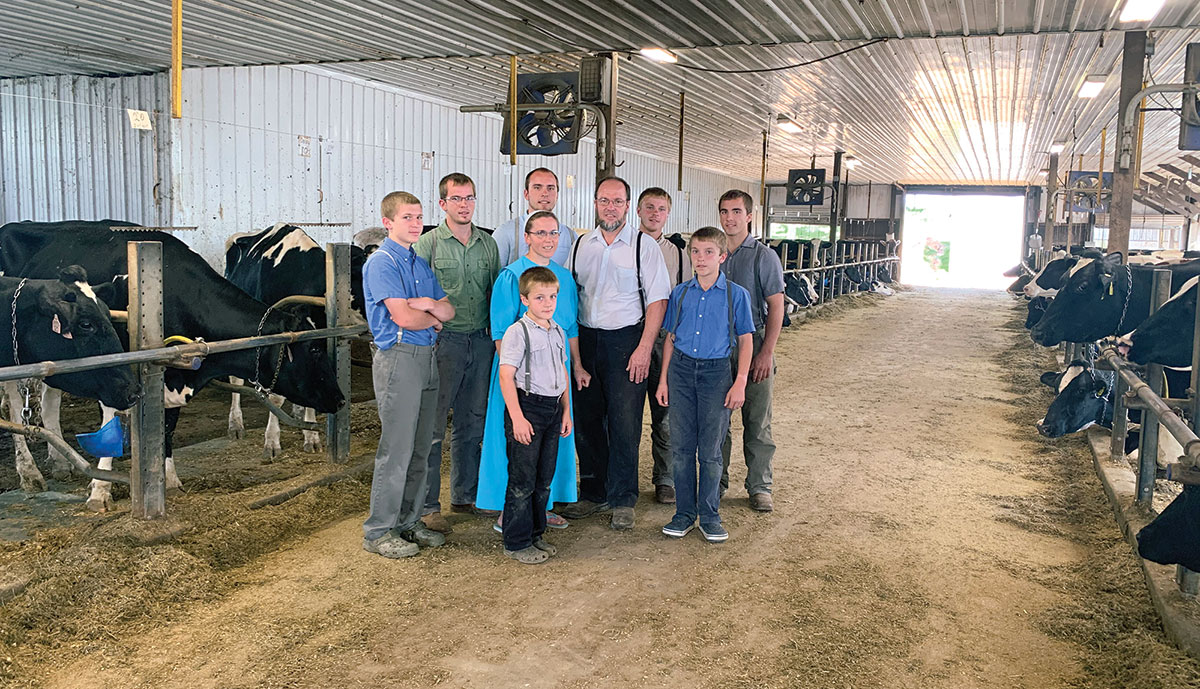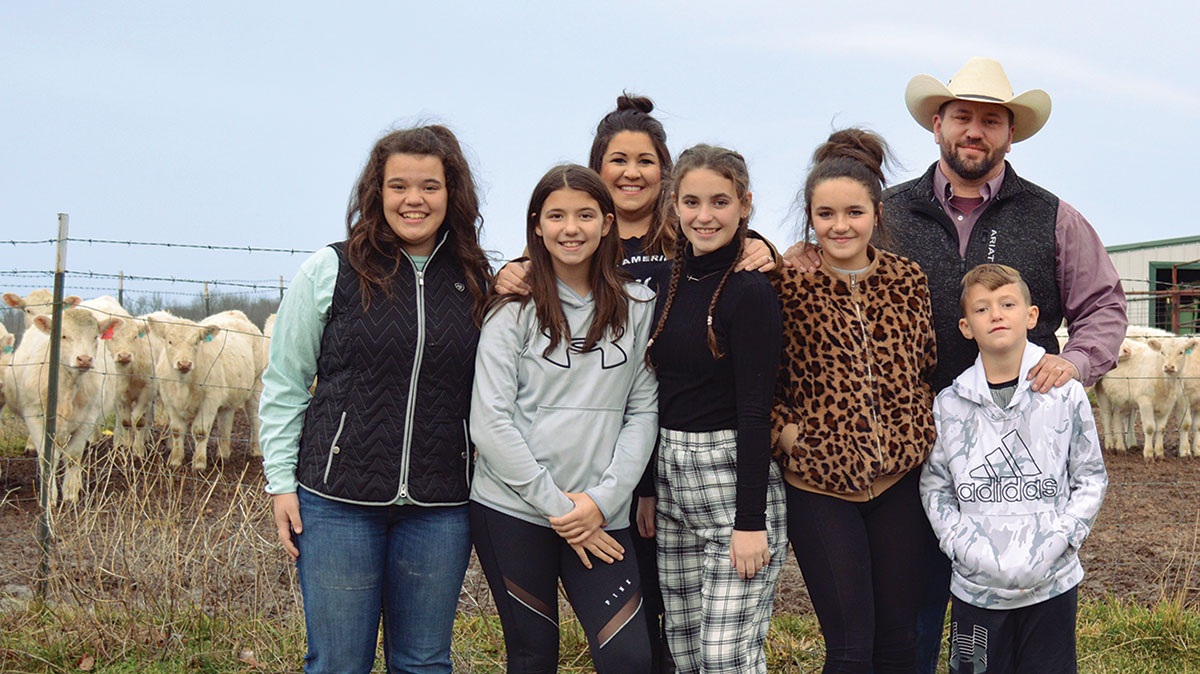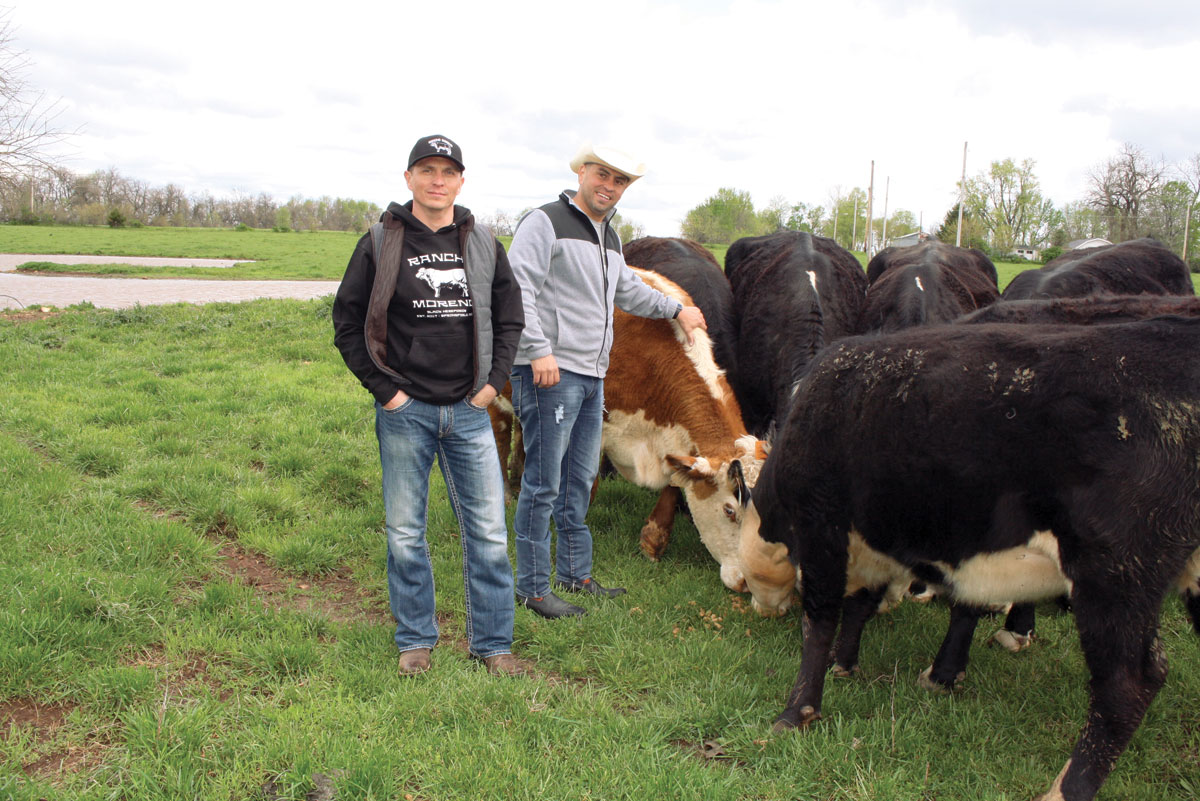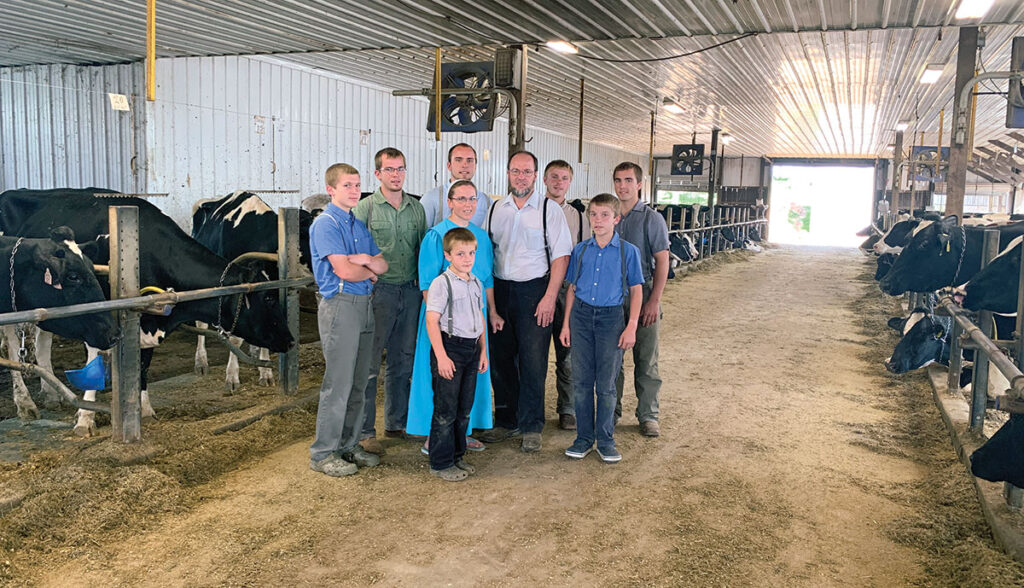
Valley View Farm returned to the dairy industry in 2011
LARUSSELL, MO. – Nathaniel Graber and his wife Rose of LaRussell, Mo., both grew up on dairy farms. Nathaniel is originally from Indiana and moved to the Ozarks with his family when he was 19 years old to their current dairy farm in Missouri. Rose is from Ohio and moved with her family when she was younger to Tennessee, then to Missouri in 1982, while continuing to dairy.
Nathaniel and Rose married in 1996 and lived on a small farm in Jasper County, Mo. When Nathaniel’s dad David Graber originally purchased the dairy farm in 1990, it was not in production. They remodeled the barn and brought their 45 to 50 Holsteins with them from Indiana.
In 2000, Nathaniel and Rose moved to Nicaragua in Central America where they were missionaries and pastored a church for almost seven years. They came back home to their small farm in 2007 and Nathaniel went to work nearby at Graber Metal Sales.
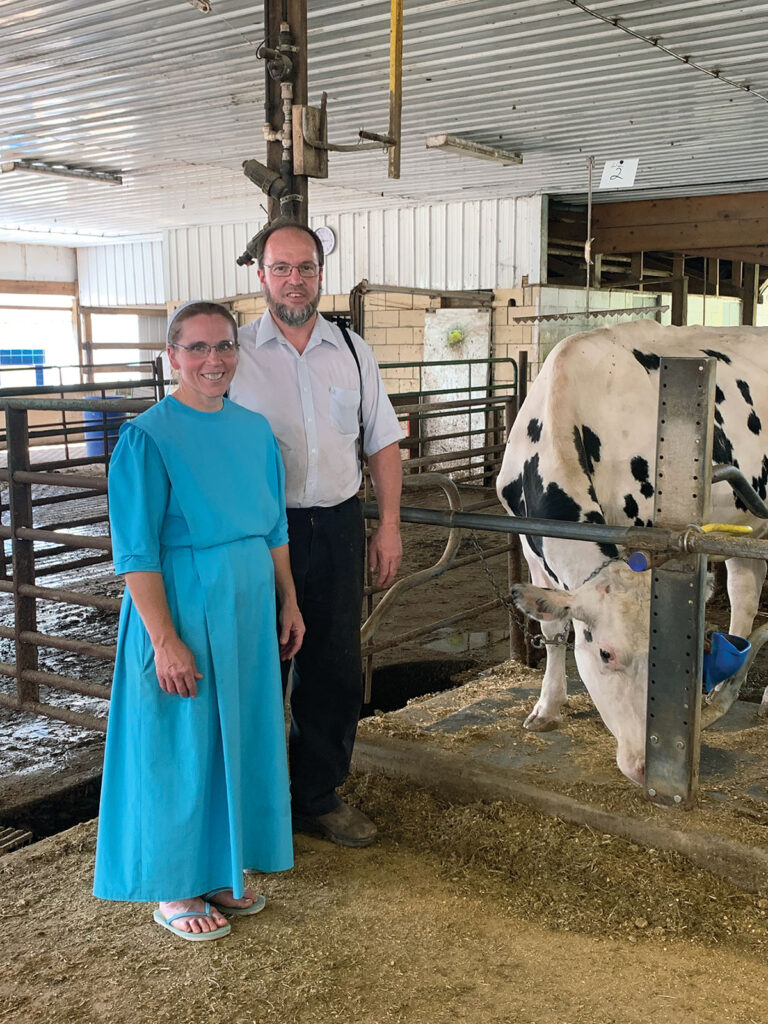
In 2009, Nathaniel’s dad moved from his dairy farm, where he had milked from 1990 to 2002, to a nearby home. Nathaniel and Rose moved to the dairy farm they today call Valley View Farm, but did not start milking until 2011. They started from scratch with 15 registered Holstein cows and have continued to grow their herd. In 2015, they remodeled the free stall barn to a 54 tie-stall to provide better care and cow comfort and to keep the cows cooler and cleaner.
“We have a double five herring bone parlor with 10 milkers and automatic takeoffs. It is a Surge system,” Nathaniel explained.
They currently have 60 to 65 registered Holsteins, with a few Brown Swiss, and milk between 45 to 54 cows.
“We always had Holsteins growing up and I just love them for their size, disposition and the amount of milk they give. They give a lot more milk than some breeds,” Nathaniel said.
For bedding they use dry shavings mixed with rice hulls.
Nathaniel and Rose have seven sons, Josiah (8), Caleb (12), Kelvin (14), Merlin (16), Thomas (19), Jaylon (21) and LaWayne (22), who are all fourth-generation dairymen.
“We wanted to start the dairy back up again for a few reasons. It was set up as a dairy, it is what we both grew up with, and we really like it for raising the family. Having all boys, the schedule of a dairy is probably the biggest thing that drew us back, along with the disciplined lifestyle that it teaches. The boys are involved in all the labor part of the dairy. We make the most of the decisions although they do give us help on that as well.” Nathaniel said.
The cows are milked daily at 4 a.m. and 4 p.m.
“Two people milk each morning and evening, and it takes about an hour and 15 minutes to milk,” Nathaniel said.
Nathaniel and Rose milk together every fourth morning and the boys are on a rotating schedule before and after school.
“They either milk, feed or do outdoor chores,” Nathaniel said. The boys do the majority of the evening milking and Nathaniel and Rose help when needed. Three of the boys work at Graber Metal Sales as well.
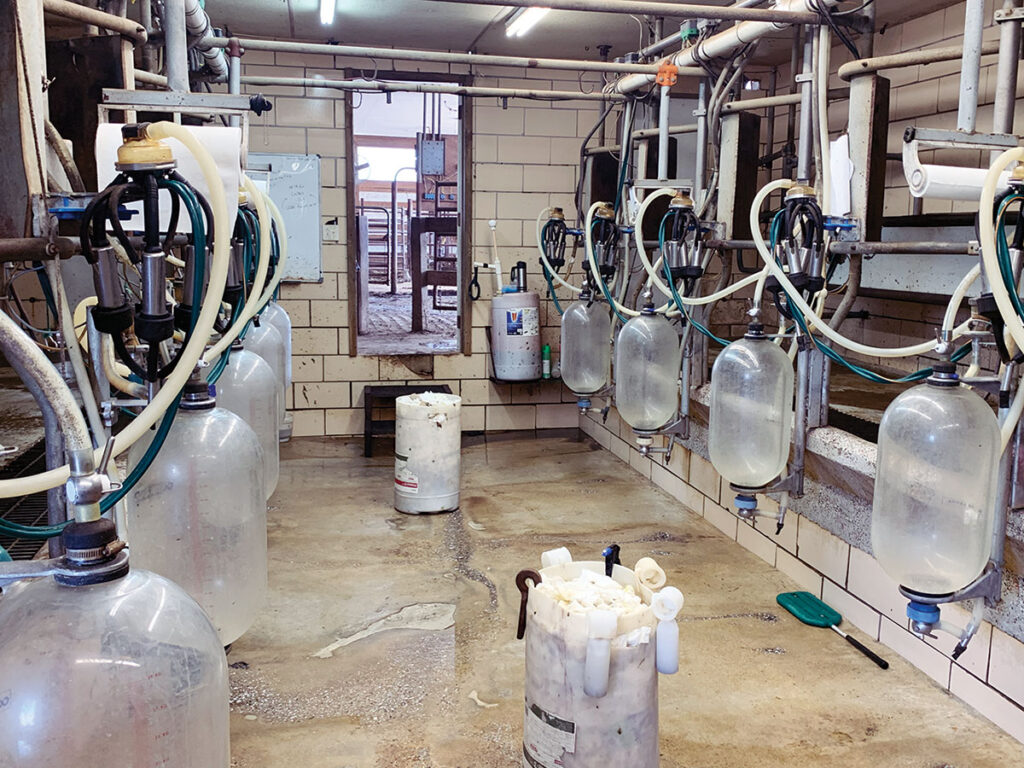
Their average milk production per cow per day is 65 to 80 pounds. They sell their milk to DFA, and it is picked up every other day. Most of it goes to Hiland in Springfield, Mo., and is used as fluid milk.
The Grabers raise, grind and mix most of their own feed and buy some alfalfa hay, but have surplus soybeans to sell each year. They own 75 acres of cropland, rent 140 acres and raise wheat and alfalfa, rotating corn and soybeans since they do not plant wheat every year.
The cows are fed a TMR mix of alfalfa hay, corn silage, ground corn, pellets from Purina, roasted soybeans and soybean meal twice a day, right after milking.
“Where they sleep is where they get their feed,” Nathaniel said.
The cows are mostly kept inside the barn but go out to the pasture for several hours on nice days. They are usually ready to come in by then because it’s cooler inside than out in the field.
Their cattle are all AI bred for superior genetics and safety reasons.
“A lot of times we breed 12 hours after a natural standing heat. We buy from several different semen suppliers and breed mostly for high-type bulls and milk production,” Nathaniel explained.
Two of their children have been to AI school, and Nathaniel said he has been servicing cows since he was 20 years old.
Most of their calves are born September to December. They raise their heifer calves and sell their bull calves locally to neighbors.
“Very seldom do I have to take a bull calf to the sale barn,” Nathaniel said.
The cows stay dry for 60 to 90 days before they calve again.
The Grabers milk year-round but said their low time is in July when it’s the warmest. “If we could time everything, we’d have them freshen in September because of the cool weather and they just milk better, but it doesn’t work that way. Generally speaking, the milk prices are better in the fall,” Nathaniel said.
The family works with John Tyra, DVM from Monett Animal Clinic to do monthly herd checks.
They vaccinate the calves, but not the dairy cows. The calves get Vira Shield 6, and blackleg and calfhood vaccines.
“My passion for milking is that I just get fired up seeing a real well-built Holstein cow with a full udder; that’s what thrills me. It really interests me to know cows by generation and see how the genetic traits, disposition, and overall health and function of the cow come through from one generation to the next,” Rose said. “I just enjoy being around the cows and working with the boys.”
The Grabers name their cows, listing their names above each individual stall. When it’s time for them to go back to their stall, they know exactly which one to go to. Rose said it generally takes about three times of them walking the cow back to their stall for them to remember. They tell others the cows know which stall to go to because their name is above their stall.
Nathaniel and Rose both agree herd reproduction is the most challenging aspect of dairying. Finding a feed ration that meets their cow’s needs, as well as raising quality crops and making hay on time is difficult too.
When the Graber’s need to be gone, they have relief milkers. Nathaniel’s brother and several families from their church help.
“We feel very confident when we leave. We don’t have to worry, as they know what they are doing, Nathaniel said. “We have plans to stay milking and don’t foresee a lot of changes or expansions. Our farm is about maxed out for the number of cows and what we have to raise crop for.”
This year, the Grabers are honored to host the Missouri Holstein Field Day the last Saturday in June with expectations of around 150 to 200 people. They are looking forward to sharing their dairy farm with others.

